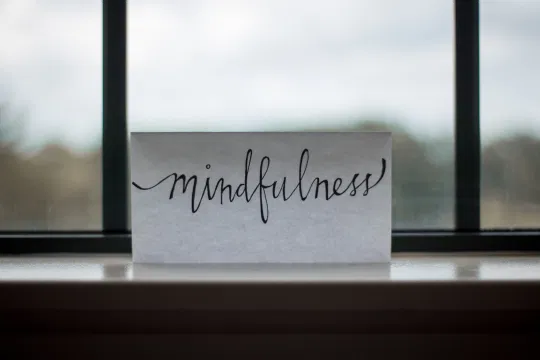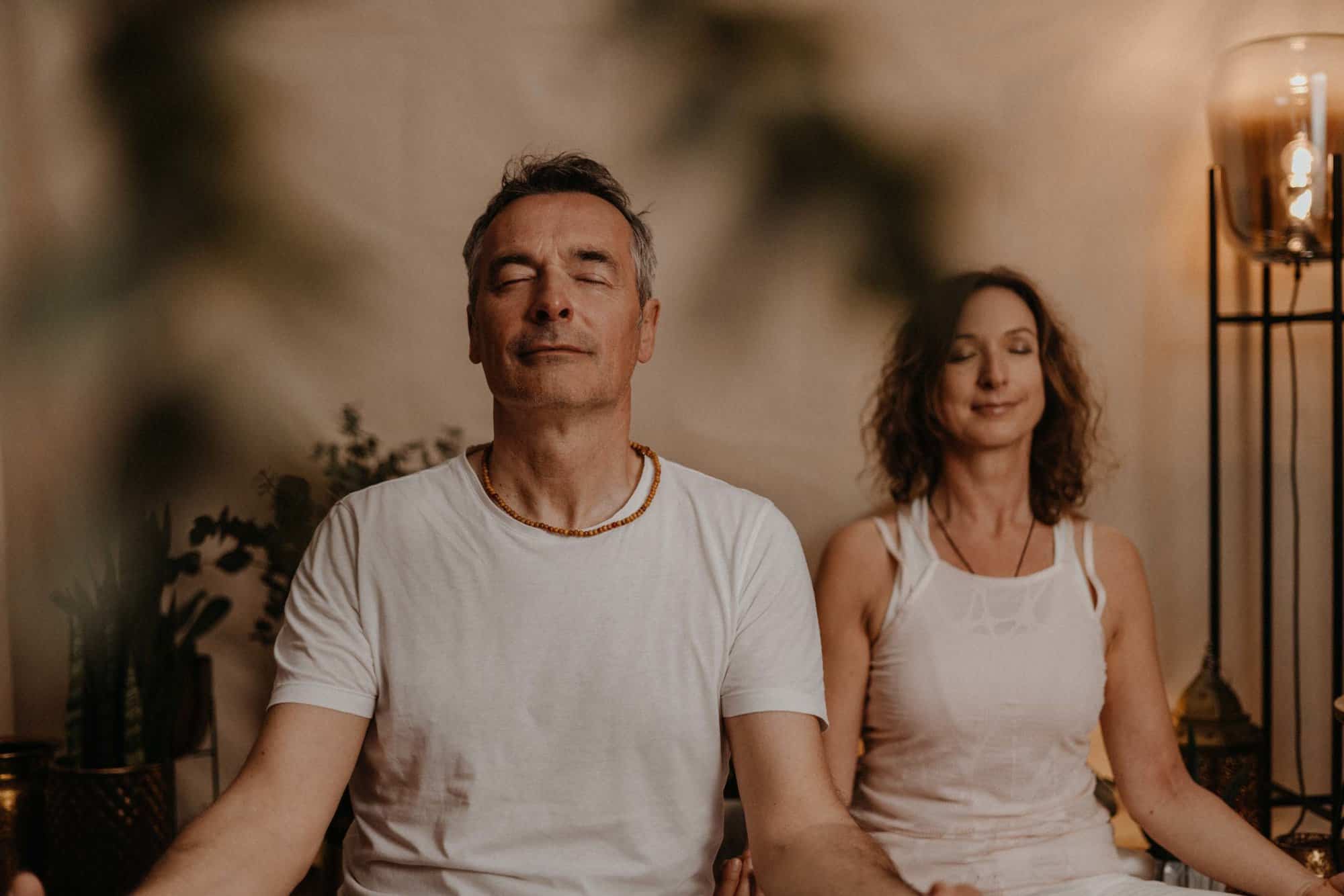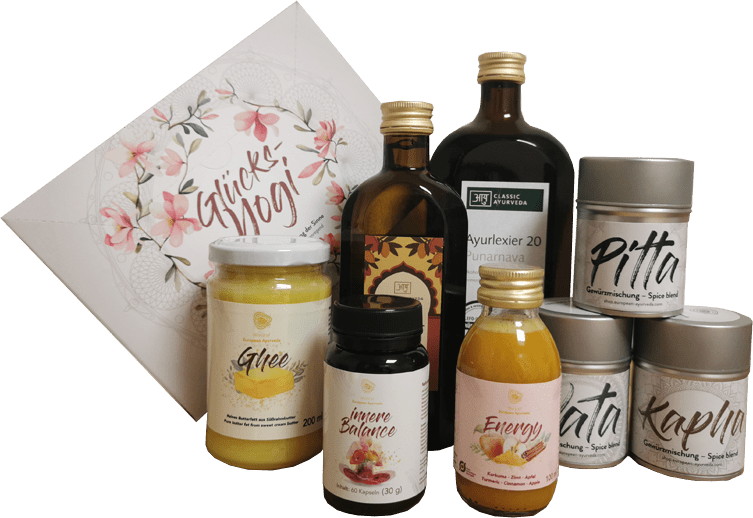Are you interested in meditation, but have your doubts about whether you can stay in the lotus position for hours? Don't worry: there are many different types of meditation. Here we give you an overview of the different meditation techniques and help you find the method that suits you best. Whether quiet or active, beginner or advanced - there is something for everyone.
What effect does meditation have?
Why do people actually meditate? It's simple: meditation is beneficial for body and mind. Those who meditate regularly will feel the effects in all areas of life and lead a more balanced and healthier life. But first things first: What does meditation mean?
What is meditation?
When you get right down to it, meditation is not an exercise that you do every now and then. In fact, meditation is nothing other than a state in which you concentrate fully on yourself and the moment - and this can be practised not only on the yoga mat but also in normal everyday life. But apart from that, meditation is not only a path to self-knowledge, it also has positive effects on physical and mental health.
Meditation against fear and worries

Fears and negative thoughts unfortunately all too often hit our psyche in everyday life. For a calmer and more harmonious life, it is particularly important to detach ourselves from such stresses.
Meditation is like a balm for your mind and changes your perspective on difficult situations. With the help of meditation you can even learn to let go.
If you meditate regularly, you will lose yourself less often in depressing thoughts and learn to better separate yourself from sources of disturbance. You deal more calmly with the daily challenges of everyday life and face them with peace and strength. In this way you create more harmony and well-being in your life.
Sleep better thanks to meditation
When your mind is calmer and more balanced, your body notices it too. Without emotional stress and distracting thoughts, it is easier for you to fall asleep in the evening and the quality of your sleep improves as well. Afterwards, you can start the next day full of energy and improve your performance and creativity.
Meditation against pain
When we are stressed, our bodies are more susceptible to illness. This can manifest itself in migraines and chronic pain, among other things. Meditation has a positive effect on the immune system and helps the body to counteract stress-related inflammation and pain.
Meditation for concentration and mindfulness
Meditation allows you to become more mindful and to perceive yourself and your emotions more intensively. You discover the depths of your being and get to know and appreciate yourself better. Through the attentive confrontation with yourself, you gain a more positive self-perception and become more content.
As your mind becomes calmer, it is much easier for you to concentrate. Of course, this won't work overnight, but with regular practice you will sooner or later find that nothing can distract you any more!
If you are happy with yourself, you will quickly notice that it is much easier for you to be more compassionate and accepting of other living beings. The more mindful you become through meditation, the more you learn to perceive your surroundings more strongly and clearly. In this way, you will encounter your surroundings with more harmony.
Learning to meditate properly - but how?
Once you have decided to meditate, this is actually the most important step. You can't really do anything wrong when meditating, even if it seems tedious at the beginning and you ask yourself whether you are really meditating "correctly". Don't be too hard on yourself, because meditation is a matter of practice and what counts is the will to never stop practising.
In order to feel a holistic effect of meditation, you first need to find a meditation technique that is best for you and that you feel most comfortable with. If you have not yet found the right technique for you, we will show you an overview of the different meditation techniques.
Active & passive meditation techniques at a glance
Basically, meditation can be divided into active and passive meditation techniques, depending on the role played by physical movement. Passive meditation focuses on the mental aspect : One remains still and motionless in order to intensively occupy the mind and thoughts.
- Mindfulness meditation
- Mantra Meditation
- Chakra Meditation
- Zen meditation
- Singing bowl meditation
- Walking meditation
- Osho Meditation
- Yoga
- Qi Gong
- Tai Chi
Which form of meditation is right for you depends very much on your individual needs and preferences . If you only have to move a little at work and often feel as if you have too much pent-up energy, active techniques can provide you with a balance.
However, if you are looking for peace and deep relaxation, you can try passive meditation techniques. We generally recommend that you start with a few simple techniques .
Meditation Techniques for Beginners: Instructions
Would you like to try meditation, but don't really know how to get started? Try a few easy techniques to find out what suits you best. Here we have briefly summarised some popular meditation techniques that you can easily follow!
Mindfulness meditation
This technique is based on consciously noticing the sensations in your body. You direct your attention to all thoughts and feelings as they arise. You take on the role of an observer and observe your passing flow of thoughts without holding on to them or judging them. After a while you will notice that you perceive your sensations differently and live your everyday life more consciously.
Mantra Meditation
In this meditation you sit quietly and breathe deeply. Fixate on a mantra, such as the famous OM, and concentrate on repeating it mentally over and over again. As soon as your thoughts drift, gently bring them back to the focus point of the mantra. This calms your mind and stops the flow of thoughts. After just a few attempts, mantra meditation has a positive effect on your ability to concentrate.

Walking meditation
On the way to work or while walking - the advantage of walking meditation is that it can be applied anywhere. Walk slowly and direct your consciousness entirely to your steps and the mental processes associated with them. Through the conscious regular movements, the body comes into harmony with the mind and dissolves stressful energy blockages.
Osho Meditation
If you like to become even more active and express your feelings, you can let off steam in a dynamic Osho meditation.
- Breathe deeply and quickly.
- Release your pent-up emotions by shouting, crying or laughing.
- Hop while chanting the mantra "Huh!"
- Sit or lie still.
- Move freely, as you like.
And what is the point of all this? Quite simple: The movement should lead to your body and mind being able to develop freely .
Chakra Meditation
The chakras are our energy centres in the body. Their activation releases blockages and influences our state of consciousness. In this meditation you concentrate on your breath and send it to all seven energy points one after the other. You can also imagine your breath as a point of light travelling through your body. The focus is on consciously directing your energy and the associated deep cleansing of your chakras.
Meditation techniques for advanced students
Perhaps you already have experience in meditation and would like to try something new and more challenging. Then, of course, there are also possibilities for you to further develop your spiritual abilities. Try one of the two meditation techniques we present here. Please note, however, that both techniques are very intensive and require a certain amount of prior knowledge.
Vipassana Meditation

If you want to completely free yourself from mental impurities, Vipassana meditation is for you. It is designed to help practitioners overcome mental disorders and leave all human suffering behind. Vipassana meditations are usually taught in 10-day retreats, during which participants are not allowed to leave the premises.
For the duration of the stay, practitioners adhere to certain rules: they do not read or write, do not drink alcohol and speak only what is necessary. Instead, the days are spent in rest and walking meditation. Vipassana meditations are quite demanding and require already pronounced spiritual knowledge in order to unfold their full effect.
Tummo Meditation
Those who long for a deeply felt experience in nature may enjoy Tummo Meditation. This technique is about generating warmth to raise one 's own body temperature without outside means. It brings the body into harmony with nature by igniting the inner fire that we all have within us but often do not use.
Through the conscious visualisations and breathing techniques, the body is to learn again to heat up and fight back in low temperatures. Negative sensations are transported from the inside to the outside and burnt off. However, this meditation technique also requires strong meditative skills and careful training.
So you see: meditation is by no means one-sided, but can be practised in many different ways. As a beginner, it is advisable to try out the different meditation techniques to discover which style suits you best. But even as an advanced practitioner, you still have the opportunity to try out new techniques and create more variety. And now have fun trying them out - you will certainly not regret it!





